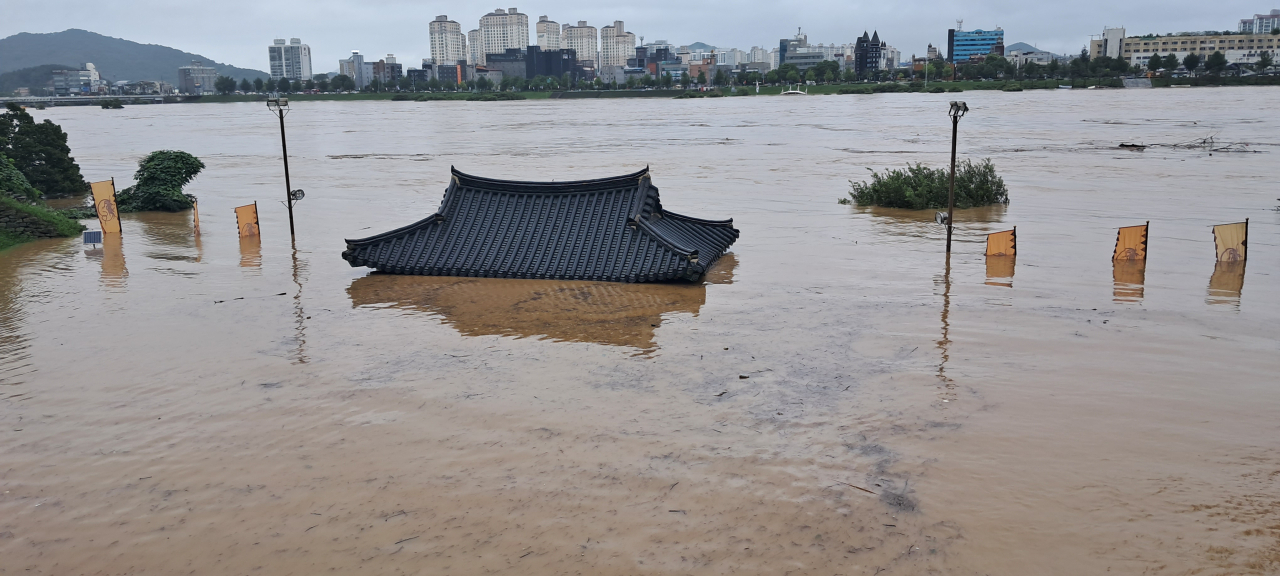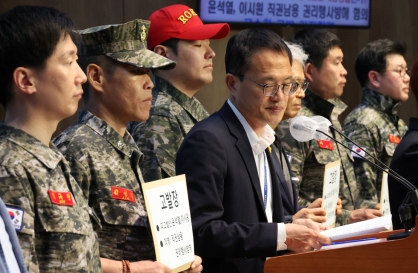Heritage agency to implement climate crisis management system
By Kim Hae-yeonPublished : July 26, 2023 - 15:40

In the face of climate change that has led to more frequent and powerful typhoons, extreme rains and termite propagation, the Cultural Heritage Administration has established a comprehensive plan for safeguarding the nation's cultural and natural heritage.
The plan, announced Wednesday, aims for a systematic response to the challenges posed by climate change.
As of Friday, at least 65 heritage sites were damaged by torrential rains this summer, according to the CHA.
Between 2002 and 2021, a total of 979 cultural heritage sites and items suffered damage due to various natural phenomena: 522 were affected by typhoons, 447 by heavy rains and 10 by strong winds, the National Research Institute of Cultural Heritage’s report stated.
In another study from the NRICH from 2011 to 2022, focusing on 927 wooden cultural heritage sites nationwide, 236 had confirmed damage from termites.
The Cultural Heritage Administration has adopted three strategies aimed at protecting both cultural and natural heritage against climate change-related damages. The first strategy is aimed at responding proactively to the climate crisis. The second involves the implementation of a climate-resilient system in order to preserve and manage heritage sites. The establishment of a robust climate crisis safety net is another strategy adopted by the state agency.
Specific tasks outlined Wednesday include establishing a national heritage climate change damage data information system utilizing big data and developing a system for scientific analysis, prediction and evaluation of the impact of climate change. Additionally, the plan involves special management of 100 selected major cultural and natural heritage sites.
Evaluating the carbon absorption value of the nation’s heritage and expanding the use of carbon absorption sources will also contribute to the safeguarding, according to the CHA.
"Seeking carbon neutrality is undoubtedly one of our essential tasks in combating climate change. The very existence of royal palaces and royal tombs in Seoul, for example, contributes toward carbon neutrality. Their preservation, therefore, is of great importance," a senior official at the CHA's Heritage Policy Bureau told The Korea Herald.
Regarding the 100 cultural and natural heritage sites to be selected for special management, the official said the selection criteria would include the location, the materials used and the traditional techniques that were employed. The 100 sites will be officially designated by 2026, the official added.






![[Weekender] How DDP emerged as an icon of Seoul](http://res.heraldm.com/phpwas/restmb_idxmake.php?idx=644&simg=/content/image/2024/04/25/20240425050915_0.jpg&u=)
![[Herald Interview] Guggenheim Museum makes a push for technology-based art with LG](http://res.heraldm.com/phpwas/restmb_idxmake.php?idx=644&simg=/content/image/2024/04/26/20240426050608_0.jpg&u=20240428114717)




![[Music in drama] An ode to childhood trauma](http://res.heraldm.com/phpwas/restmb_idxmake.php?idx=644&simg=/content/image/2024/04/25/20240425050929_0.jpg&u=)






![[Herald Interview] Mistakes turn into blessings in street performance, director says](http://res.heraldm.com/phpwas/restmb_idxmake.php?idx=652&simg=/content/image/2024/04/28/20240428050150_0.jpg&u=20240428174656)
